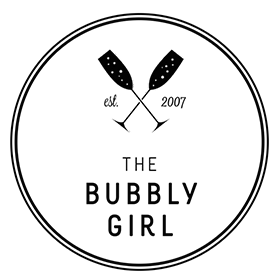For the past few weeks, a new friend has been telling me about the wine bargains he finds at a placed called Grocery Outlet. Actually, he calls it Gross Out, so I can’t say I had been in a hurry to get over there. But when he brought a couple white wines to dinner that were surprisingly good, my curiosity got the best of me.
It looks like a bodega outside, with bins piled high with oranges and mini watermelons. Inside, racks are piled equally high with everything from toilet paper and toothpaste to flower pots. I snagged some organic baby green mix in the produce section, then went to track down the wine. Along the way I noticed a very extensive cheese section, where a woman explained to her friend what “ricotta salata” was.
On the display opposite the cheese, I spotted my first wines. I picked up an Italian one in a familiar berry shade of magenta. The label said Casorzo D.O.C. Ricossa Antica Casa. The description on the back read: “a semi-sweet sparkling frizzante style wine of fragrant floral aromas with hints of rose petal and a soft smooth taste.”
That description told me I had found a wine that contained some brachetto, the red grape from Piedmont typically made into sweetly balanced sparklers with distinctive rose and berry aromas and flavors. A wine with word brachetto on the label will usually run $18 to $22. Grocery Outlet was selling it for $7.99–perfect for making sangria.
In the wine aisle, I spotted all kinds of bottles mostly unfamiliar. Many of the wines were blends, such as the Spanish white Pazo de Monterey that my friend had brought to dinner. It was marked $2.99 here, but drank much better. A Google search revealed that the blend of treixadura and godello grapes that had soft apple and floral aromas sells for $9 to $12 around the country.

There’s some brachetto blended into this Italian dessert wine that was just $7.99.
But in the refrigerated wine case, I found the real bargains. Among a bunch of half bottles of botryitized semillon from Australia–a super bargain at $9.99–I spotted a few bottles of rosé sparkling with the name “Champagne Didier Chopin” and “product of France.” I didn’t know this wine either, but that doesn’t mean much since there are hundreds of smaller producers in Champagne that never make a name in the US.
I Googled the name from my phone and learned that Msr. Chopin started making wines in the Vallée de la Marne nearly 20 years ago. His brut rosé sells for around $55 in U.K. He’s a négociant-manipulant, meaning that he buys pinot noir and pinot meunier grapes and then fashions them into wine. We savored this fruity deep pink wine with its bold berry flavors and aromas. Even more delightful was picking it up for $19.99 at Grocery Outlet.
I’ll definitely be going back for more.










